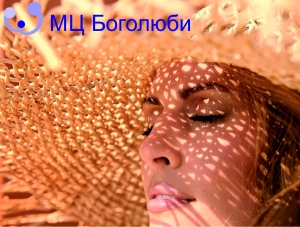The last two decades, the views on the effect of insolation on our health have undergone significant changes. At the end of the last century, tanning was categorically considered an attribute of excellent physical health and even success. But today almost half of the population of Europe uses photoprotective agents. The evolution of views contributed to the increase in oncological skin diseases.
The most common skin pathology caused by the influence of the sun is ctinic keratosis. (It is also called “solar keratosis.”) This disease is partly related to age and partly to the phototype: it affects 60% of fair-skinned patients over the age of 40 years and 80% of patients over 60 years of age. Solar keratosis is also found among young people who are exposed to artificial ultraviolet radiation in tanning salons even in winter for the sake of a perfect tan.
Actinic keratosis is considered a form of precancerous skin condition. It rarely occurs in representatives of the black race and in people with phototype IV-VI.
Statistics show that pathology is more often manifested among men. One explanation for this may be that many men sunbathe without the use of sunscreens.
Causes and Risk Factors
The reason that causes solar keratosis is ultraviolet rays. It seems paradoxical that elderly people complain of keratosis at a time when exposure to the sun is reduced or almost absent. The explanation is simple: solar keratosis is a cumulative phenomenon. For many years, the influence of ultraviolet radiation "accumulates" in the skin, and the outbreak of the disease occurs suddenly, even if a person has not sunbathed for several years.
Scientific studies demonstrate a link between actinic keratosis and immunosuppression. Changes in immune conditions (for example, organ transplantation) can contribute to the progression of solar keratosis in the tumor, accelerating the time of malignant transformation.
In some cases, actinic keratosis results from prolonged exposure to certain chemicals or x-rays.
Symptoms and Complications
Actinic keratosis manifests itself in the form of yellowish or grayish papules, sometimes surrounded by a red halo. The places of their localization are the face (especially the ears, forehead, lips), legs, back, that is, the areas most exposed to the sun.
Damage caused by solar keratosis is more noticeable to the touch than visually, because the scales are rough and at the initial stage are so small that it is difficult to distinguish with a simple look. The development of lesions is very slow. Gradually they increase their sizes to 3 - 6 mm. It is important to know that actinic keratosis should not be confused with seborrheic keratosis. The latter is a benign condition that cannot lead to neoplasia.
As a rule, keratomas have no obvious effects, except for the sensation of itching, rarely inflame and bleed. As already mentioned, actinic keratosis can develop and be complicated by a neoplastic process. In 10% of patients suffering from this disease, a malignant evolution of the disease occurs. Approximately 50% of cases of squamous cell carcinoma begin precisely from actinic keratosis, which did not receive the necessary attention on time. From these data, it becomes clear how important the early diagnosis of the disease is.
Treatment and prevention
Therapeutic approaches to eliminating actinic keratosis are different. Pharmacological treatment includes topical application of drugs to the affected areas. Invasive treatments: surgical removal; cryotherapy (liquid nitrogen); laser therapy. In the Bogoliuby MC, the Surgitron radio knife is used to remove keratomas.
Our experts prescribe the treatment that suits best the patient individually.
It is recommended to remove keratomas all at once, visit a dermatologist at least once a year to track the dynamics of the development of formations. And to prevent the occurrence of keratosis, you should be very attentive to the influence of the sun, wear protective clothing and use sunscreen.

















